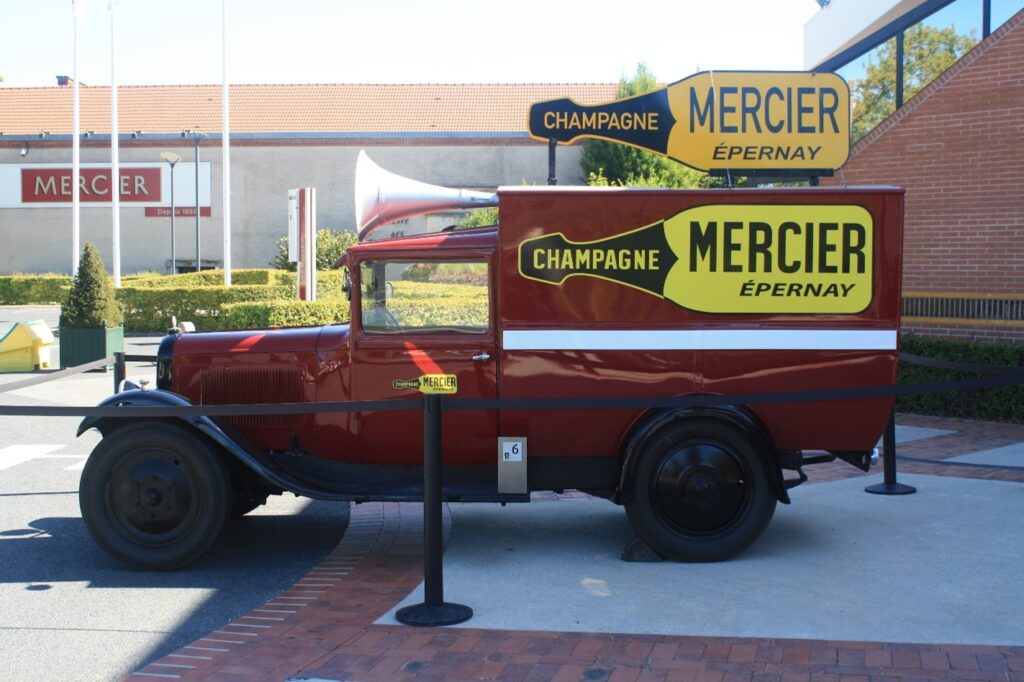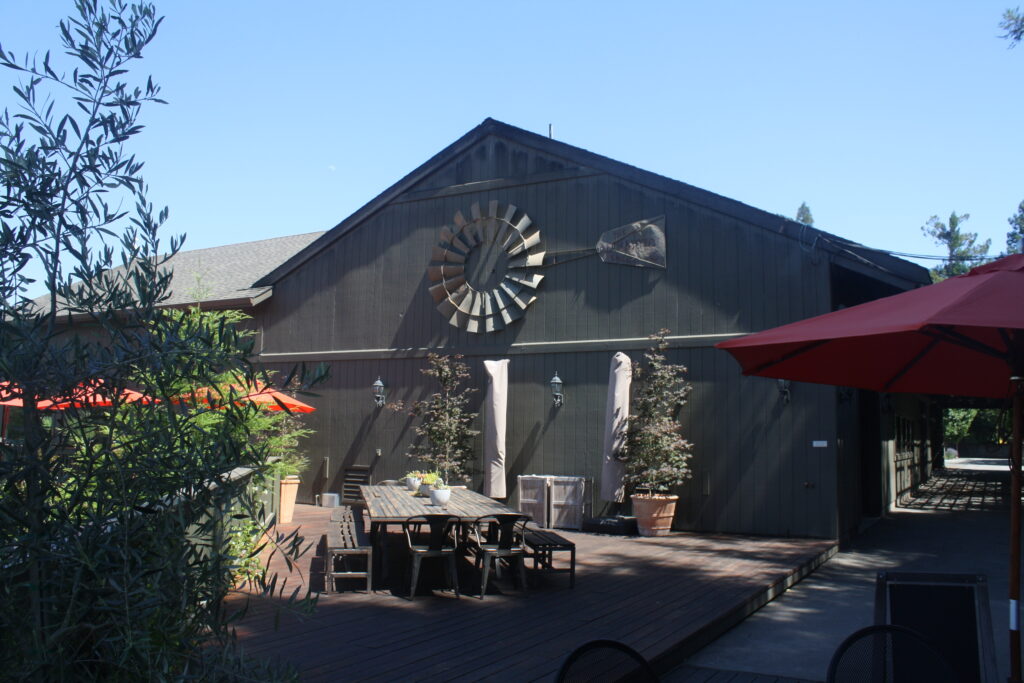In the city of Épernay, there is a famous street called the Avenue de Champagne, which Power Tasting has featured in the past. It is lined with Champagne houses where you can taste all day long. At the far end, away from the center of town, is Champagne Mercier (www.champagnemercier.com). They may not make the best Champagne in France (we’ll leave it to others to choose which one is) but it is the most popular one in that country. Considering the combination of quality and price, that’s understandable. Their top Brut Rosé costs about $38 a bottle. Alas, it can’t be found in the US and wouldn’t be that inexpensive if it were.
However, the price of a bottle isn’t the attraction at any winery, it’s the enjoyment of the visit and the tasting. And here Mercier excels. As you approach the entrance, there’s an antique truck that evidently was once used to deliver Champagne. It’s a way of telling a visitor that Mercier has been around a long time, since 1858 in fact. The current facility was erected in 1871. When you enter, you are confronted with a massive, decorated wine barrel, that holds 200,000 bottles worth of wine. It was built for the 1889 Paris World Exposition.
Viewing the artwork from the train at Champagne Mercier.
The actual visit begins with a tour of the cellars. Groups are taken together onto a glass elevator that descends slowly down 98 feet. The walls of the shaft have paintings, to get you into the spirit right away. At the bottom you are ushered into an open train, sort of like at Disneyland. It winds its way through parts of the 11 miles of chalk tunnels. Evidently the founder, Eugène Mercier was concerned about the cultural well-being of his workers, so there are carved works of art throughout the cellars. And of course you get to see where Champagne bottles are stored, riddled and aged.
There is a recorded guide as you progress through the cellars, which is available in English as well as in French. Be sure to bring a sweater. The whole reason for cellaring Champagne is to age it and concentrating the sediments in a stable, cool environment. Rolling along in an open train, you definitely feel a little chill.
At last, the tasting.
At length you return to the surface and have the chance to taste. Tours include either one or three Champagnes to try. At this point you’re so eager and thirsty that of course they seem quite good. It takes some taste memory to summon up how you felt about better-known labels you’ve had in the past (or an hour ago elsewhere on the Avenue de Champagne. If you wish, you are free to wander around the public area, admiring that big barrel and taking in the modernist interior architecture.
When you step outside at last you find yourself in a vineyard. We think it’s the only working vineyard inside the city limits of Épernay. Once you’ve seen the hectares after hectares of vines in Champagne, you may not be surprised by the size of this vineyard, but it’s mere existence is another reminder of what Champagne production must have been more than 100 years ago.
Mercier is among the most fun tours we have taken at a Champagne house. It is worth the visit.





















